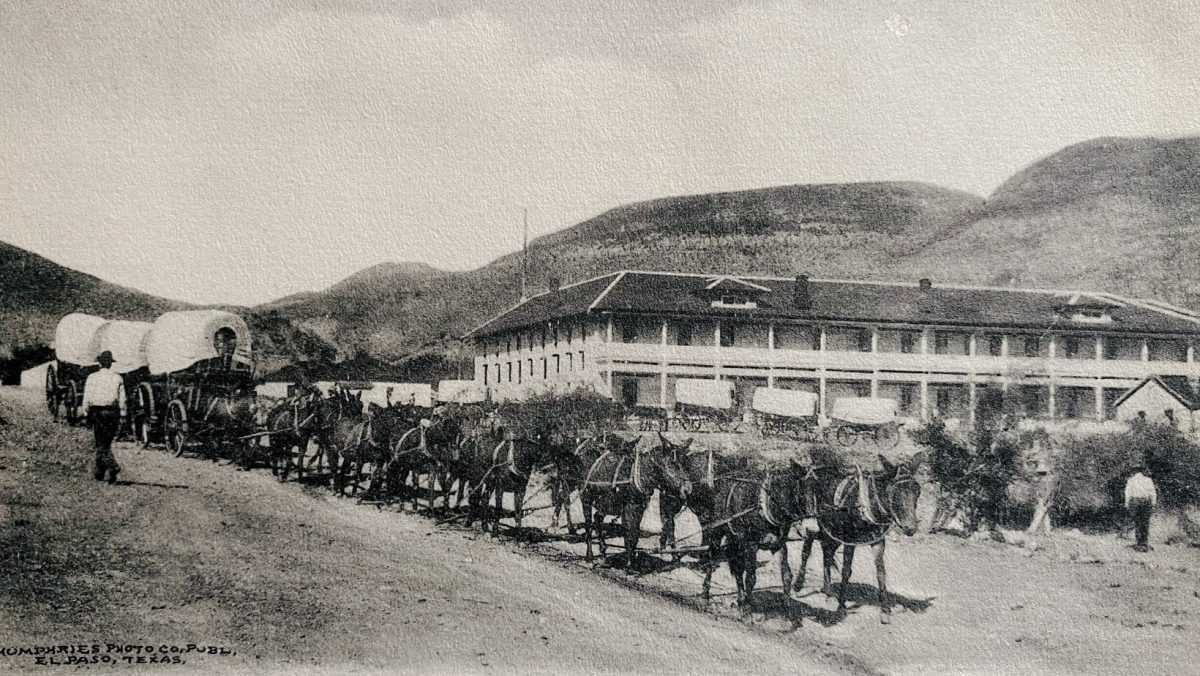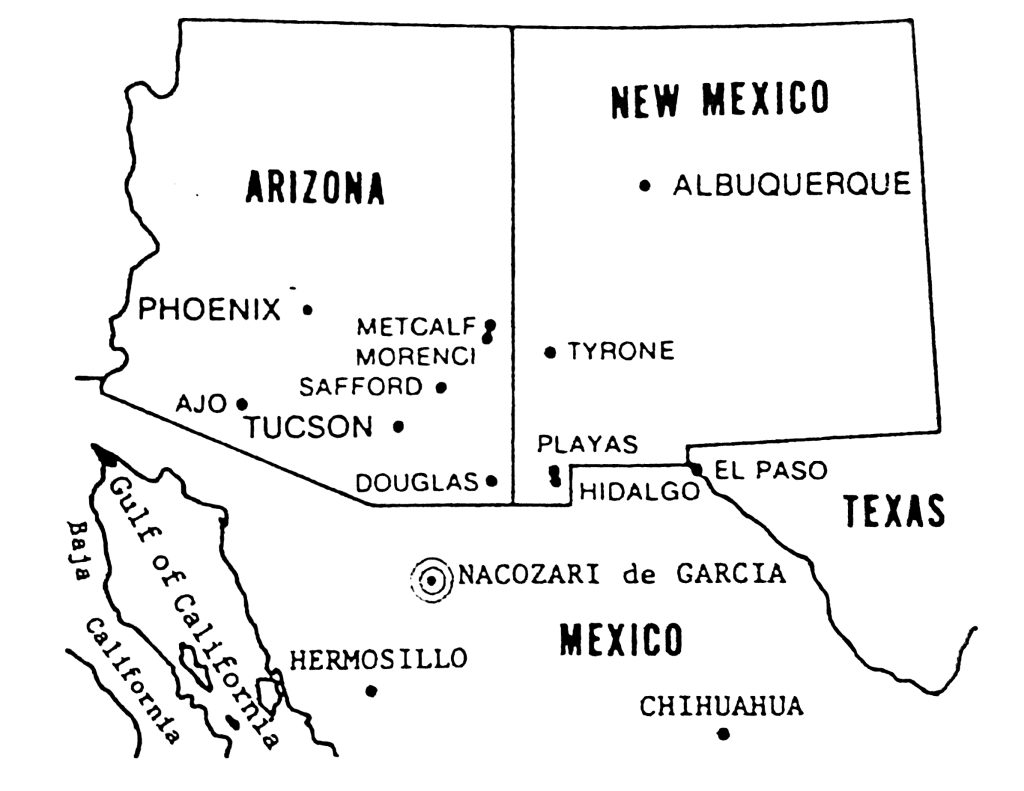
Nacozari—The Rich Zone
27 de julio de 2023
The first Phelps Dodge copper mining operation in a foreign country began in 1895 at Nacozari, Sonora, Mexico, when Dr. Louis D. Ricketts, consulting engineer, surveyed the mineral resources of northern Sonora on behalf of Phelps Dodge. Nacozari, located about 75 miles south of Douglas, Arizona, received its name from a well-known landmark in the area—two distinctive iron-and-copper-stained pillars, the Pilares de Nacozari.
Legends tell of ancient mining activities and fabled lost mines near Nacozari and in the surrounding countryside. At least 300 years ago, the Spanish mined silver just to the north, at Churunibabi. Early copper miners smelted their ores at Granaditas, Sonora, Mexico, and packed the copper matte by mules to Guaymas to be shipped by sailing vessels to Swansea, Wales for refining.
Mining continued to be important in northern Sonora until the early 1800s when revolutions and wartime conditions in Mexico made mining virtually impossible. By the time the country had won independence from Spain in 1821, the new republic was suffering from poverty, lawlessness, anarchy, and hostile Indians. But, in 1876, Porfirio Diaz became president, and for the next 30 years, he exercised strict control over the nation. In an effort to rebuild the feeble economy, Diaz encouraged foreign capital and investments.

As a result, the Moctezuma Concentrating Company from New Jersey invested in mining properties in the Nacozari district and operated mines there for about 10 years. Around 1890 they sold their interests to the Guggenheim family of Philadelphia. Around the same time, Phelps, Dodge & Co. had become well established in Arizona and was the state’s largest copper producer. But the Phelps Dodge partnership was starting to experience a decline in high-grade copper ore reserves at Bisbee and Morenci and something had to be done. The answer was soon obvious and in 1895, Dr. James Douglas hired Dr. Louis Ricketts as his assistant and asked that he evaluate the Guggenheim properties and other mineral deposits in northern Mexico for the company. Both Drs. Douglas and Ricketts were pleased with their findings and subsequently recommended the purchase of the Guggenheim properties by Phelps, Dodge & Co.
With the acquisition of the Moctezuma properties and the need for a larger smelter to process the ores from the ever-expanding production of the Copper Queen Mine, Phelps Dodge constructed its own railroad, the El Paso and Southwestern, and a new smelter just north of the Mexican border. The town of Douglas was built next to the smelting facilities. However, until the railroad was completed in 1904, all supplies going to Nacozari had to be hauled by mule teams over a primitive road, twisting and winding for over 90 miles. It was a difficult journey at best!
In the first decade and a half of the 20th century, Mexico was undergoing continual internal struggles. After the overthrow of President Diaz’s regime in 1911, revolutionary activities in Mexico caused occasional interruptions in train shipments to and from Nacozari. And in 1915 when Pancho Villa attacked Agua Prieta, several hundred Americans left Nacozari and fled north across the border. However, the town of Nacozari suffered little during those turbulent times because of the respect for Phelps Dodge from the revolutionaries and Federales alike that came about through an established program of education for children, improved living standards, and training in modern mining methods for the Mexican citizens who were employees of the company.
During the post-war depression of 1918, the Moctezuma Copper Company was forced to curtail operations for 12 months. In 1931 a worldwide depression caused another shutdown of the properties that lasted six years. Operations were resumed in September 1937. Production at the Pilares Mine and Nacozari concentrator was increased substantially during World War II at the request of the U.S. War Department. But, after the end of the war, production dropped off and on May 31, 1949, all operations of the Moctezuma Copper Company were discontinued due to the exhaustion of ore reserves. In the latter part of 1950, leaching and precipitation operations were resumed and these activities continued until December 15, 1960, when all operations were terminated.
Phelps Dodge retained ownership of the property and conducted periodic exploration over the next 20 years in an effort to locate new copper ore reserves.
The Pilares mine of Phelps Dodge’s Moctezuma Copper Company should not be confused with the recently started La Caridad mine near Nacozari. La Caridad is located about eight miles southeast of the Phelps Dodge property.
In 1979 Phelps Dodge’s property at Nacozari was “Mexicanized” by the Mexican Court dissolving Moctezuma Copper Company and forming Minera Pilares, S.A. de C.V. of which Phelps Dodge retains a 49 percent interest.
© All Rights Reserved
